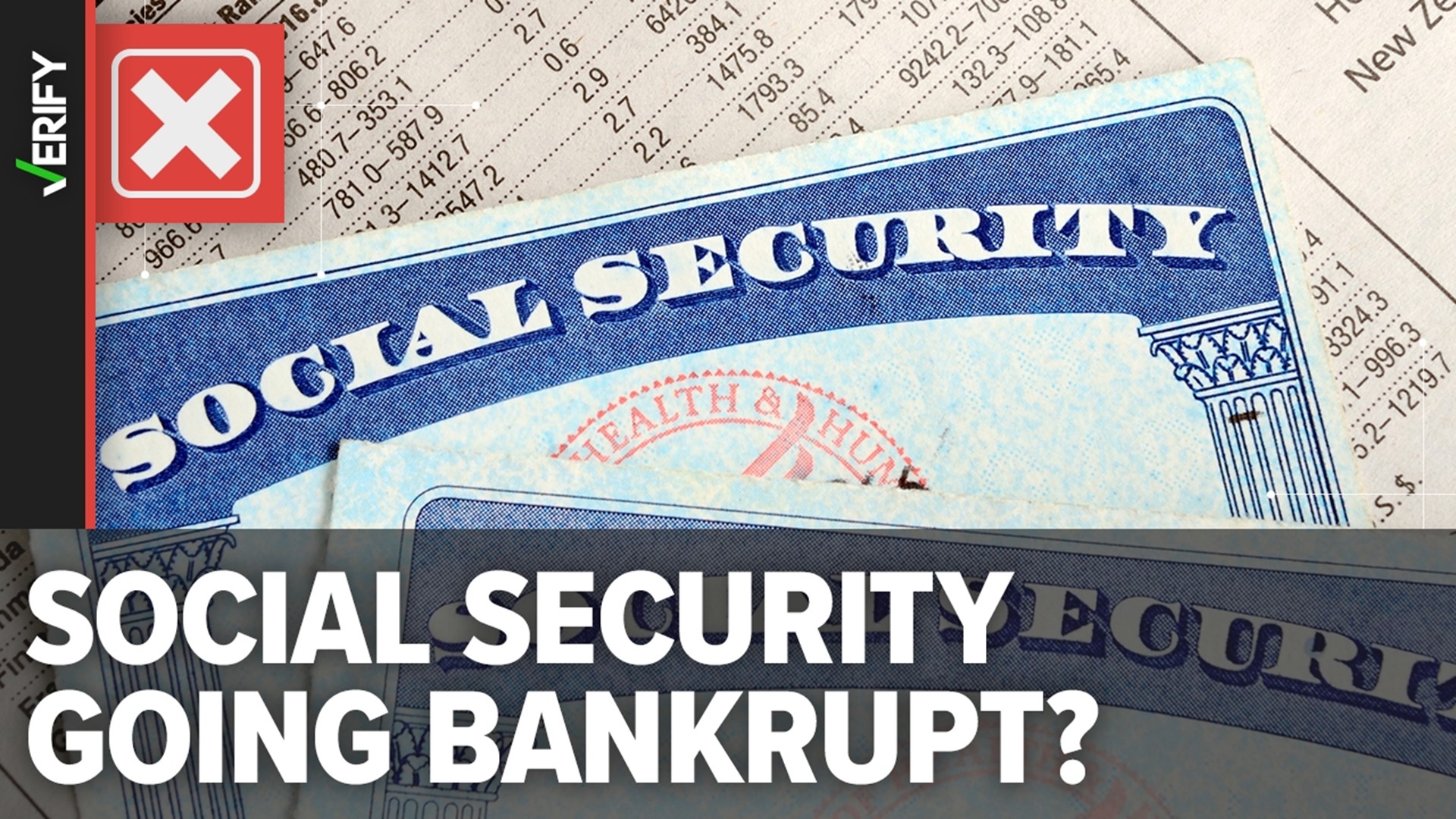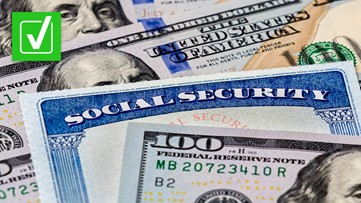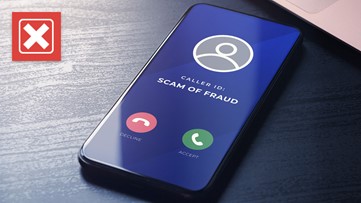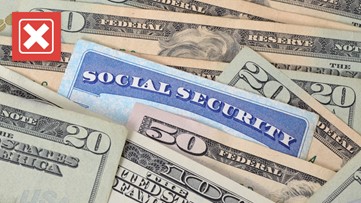Lawmakers and others have claimed over the years that Social Security will go bankrupt in the future.
About 67 million Americans rely on benefit payments from the federal program, which provides people with an income when they retire or can’t work due to disability.
As the rumors continue to spread in 2023, an advocacy group called Social Security Works claimed in a June tweet that it’s “impossible for Social Security to go bankrupt.”
VERIFY reader Leroy also asked if “Social Security is going to end in the near future.”
THE QUESTION
Is Social Security going to go bankrupt?
THE SOURCES
THE ANSWER
No, Social Security is not going to go bankrupt. But the program faces legitimate funding challenges that could lead to lower monthly benefit payments in the future.
WHAT WE FOUND
Social Security is often referred to as a “pay as you go” program. That’s because benefits are primarily funded through a dedicated payroll tax, which is deducted from every paycheck you receive. Both workers and employers are required to pay Social Security payroll taxes.
As long as workers and employers keep paying payroll taxes, Social Security recipients will continue to receive monthly benefit payments, AARP and the Center on Budget and Policy Priorities (CBPP) explain.
The program also receives funding from income taxes that some beneficiaries have to pay on a portion of their benefits.
That means claims alleging Social Security will go bankrupt are false. The program won’t completely run out of cash for monthly benefit payments since it always receives income from taxes.
However, future Social Security benefit payments could be lower than expected due to legitimate funding challenges. The program’s trust fund reserves could be depleted within the next decade, according to the most recent estimates.
Social Security’s income is deposited into two financial accounts called trust funds – the Old-Age Survivors Insurance (OASI) Trust Fund and the Disability Insurance (DI) Trust Fund. Those trust funds are used to pay out Social Security benefits.
The trust funds hold money that isn’t needed in the current year to pay benefits and other expenses. By law, that money is invested in special Treasury bonds that are guaranteed by the U.S. government and earn interest, the Social Security Administration (SSA) explains.
More from VERIFY: Yes, the federal government borrows Social Security funds
Social Security’s costs are growing as more baby boomers retire and collect monthly benefits, the CBPP says.
When Social Security collects less revenue than it needs to pay benefits, the program must redeem trust fund reserves to help cover the cost of monthly payments. According to the Congressional Research Service (CRS), this happened in both 2021 and 2022.
Social Security had about $2.83 trillion in combined trust fund reserves at the end of 2022, the CRS says.
SSA has warned for more than a decade that Congress would “need to make changes to the scheduled benefits and revenue sources” for Social Security in the future. Without action from lawmakers, the trust funds will eventually run out of cash reserves.
If that happens, beneficiaries will see less money in their checks, with Social Security relying only on incoming tax revenue to make payments.
The OASI Trust Fund, which pays monthly benefits to retired workers, their spouses and survivors of deceased workers, is expected to be able to pay full benefits until 2033, according to the most recent annual trustees report. At that point, the program could only pay out 77% of scheduled benefits.
The DI Trust Fund, which pays monthly benefits to disabled workers, their spouses and children, is expected to make full benefit payments through 2097.










